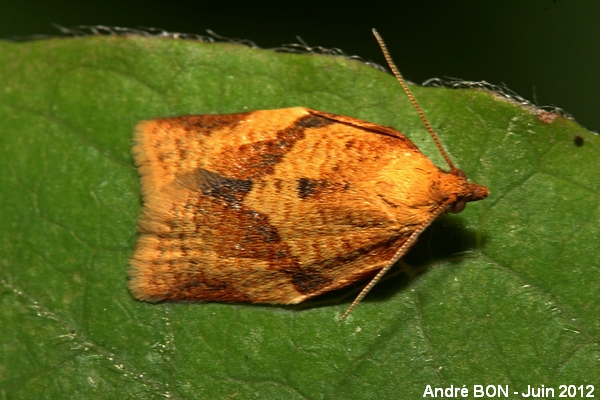
| Clepsis consimilana (Hübner, 1817) |

|
|
Scientific name: Clepsis consimilana (Hübner, 1817) Common name: French name: Order: Lepidoptera Suborder: Microlepidoptera Family: Tortricidae Subfamily: Tortricinae Wingspan: 13 to 17 mm for males, 15 to 19 mm for females. Biotope: Open areas, parks gardens, hedgerows, orchards. Geographic area: Europe, Asia Minor, North Africa, introduced to the east of the United-States. Flight time: Late May to late August plus sometimes September to October. Number of generations : 1 plus sometimes a second partial generation. Caterpillar: Violet green to violet grey with a pale brown head. Host plant: Many trees and shrubs, including Privet (Ligustrum), Lilac (Syringa), Ivy (Hedera), Honeysuckle (Lonicera), plants of the Polygonum genus, Apple Trees (Malus), Hornbeams (Carpinus), Hawthorn (Crataegus), etc. Caterpillars prefer dead leaves. |
The colour of Clepsis consimilana's fore wings is rather variable, from pale grey to reddish brown. They are marked by two small black spots along the inner edge. You can distinguish one oblique dark brown median stripe drawing some kind of a V-shape when the micro-moth is landed. There is a small triangular patch touching one quarter of the costal edge close to the apex. Females are a more uniform colour and the markings are sometimes hardly visible or even missing. Males show a costal fold on the basal half. Clepsis consimilana winters as a caterpillar. |
| [To know more about the Clepsis consimilana] [Top] |

|
The two black spots located on the inner edge of the fore wings are clearly visible on this picture. The presence of a costal fold indicates one male. |